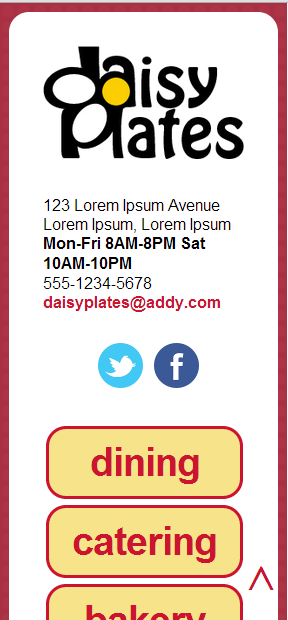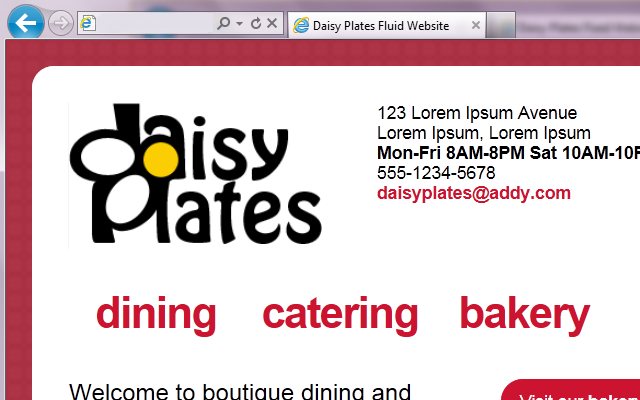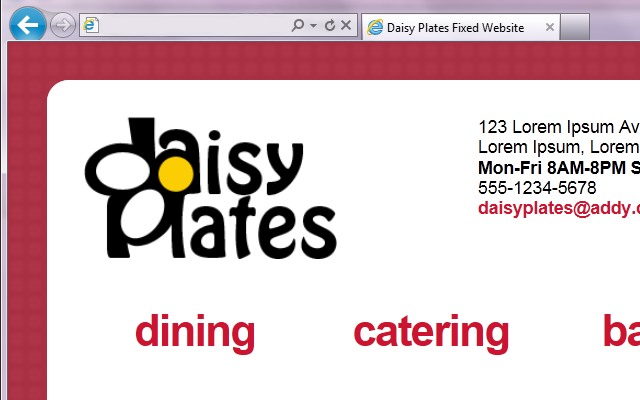The final phase in the responsive site for “Daisy Plates”, an imaginary boutique catering business I designed in past articles is to apply media queries to make the site adaptive and then further tweak these media queries along with adding a meta tag to create the responsive site.
Daisy Plates Responsive Website
It had been a while since I visited the responsive design world, so it was time to brush up – and learn some new things as well – with some teamtreehouse.com tutorials.
First, I had to determine what my target devices would be. In an earlier article, although I was in practice building for desktop, iPad and iPhone, I said I would test in the devices available to me: an Android tablet, an Android phone, Windows 7 desktop in the latest IE, Firefox, Chrome and Sarafi browsers, as well as Safari on a Mac if I could access one.



